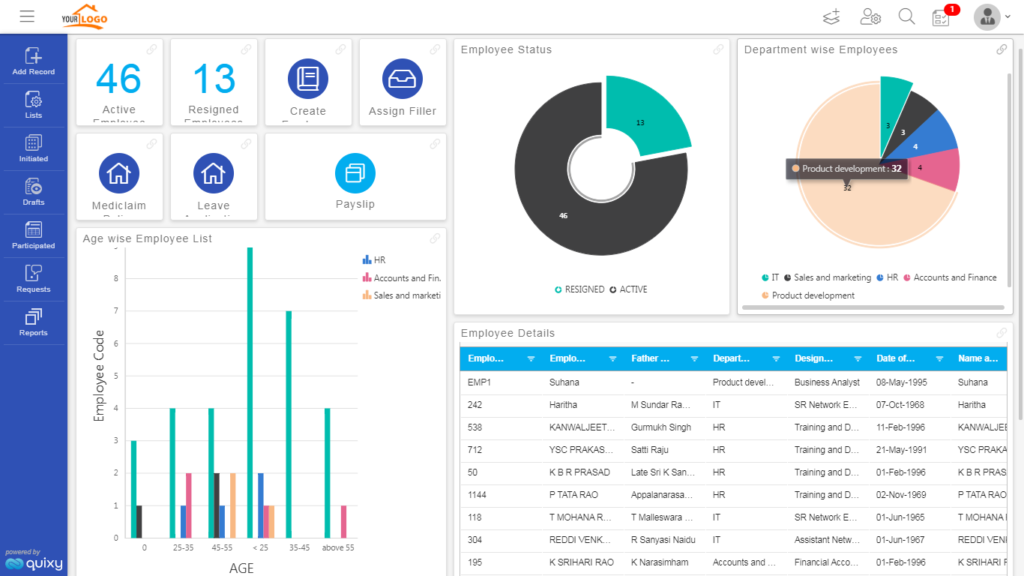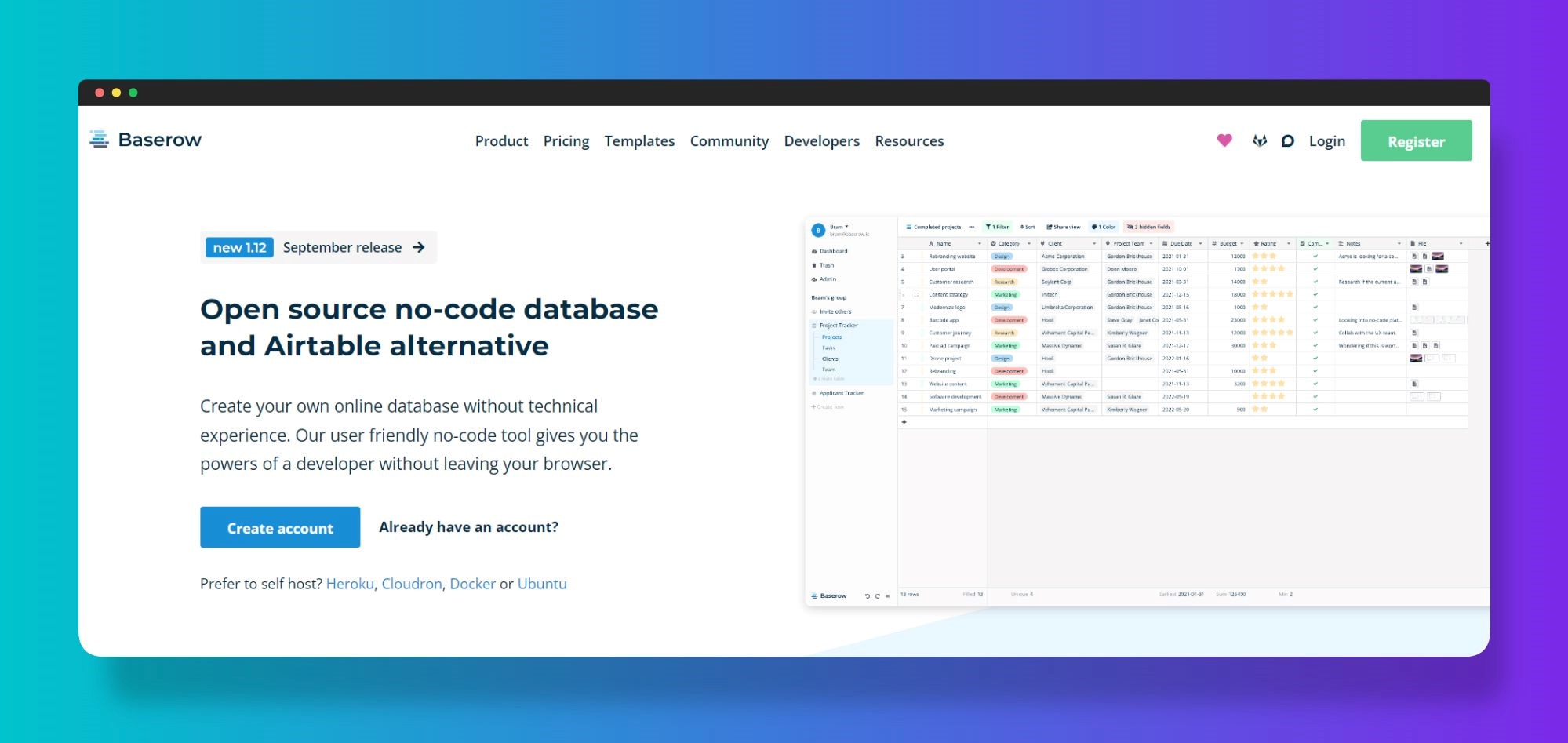No-Code Open Platform Database Development: Streamline Complex Development Tasks
Discover Just How Scalable Databases Can Be Made Use Of Without Coding to Enhance Your Organization Procedures
In today's hectic organization atmosphere, the ability to take care of and evaluate information efficiently is extremely important. Scalable data sources, specifically when matched with no-code remedies, use a transformative method that encourages non-technical individuals to simplify operations. By employing tools that require no coding experience, companies can improve their operational capacities while minimizing reliance on IT sources. The genuine concern exists in comprehending just how these options can be customized to details business needs and what potential hurdles may arise in their implementation. Checking out these elements can light up the path to operational quality.
Comprehending Scalable Data Sources
Scalable data sources are important for contemporary service procedures, allowing organizations to effectively handle increasing volumes of information without giving up performance. These databases are made to adjust and grow to the changing needs of a business, ensuring that they can deal with bigger datasets and more intricate inquiries as organizational requirements evolve.
Comprehending scalable databases entails identifying their 2 main kinds: vertical scaling and horizontal scaling. Upright scaling, or "scaling up," involves adding even more power (CPU, RAM) to an existing web server to boost performance. Alternatively, straight scaling, or "scaling out," entails including extra servers to disperse the load, which usually leads to better adaptability and fault tolerance.
One more vital element is the design of scalable data sources, which can be either relational or non-relational. Relational databases, such as MySQL and PostgreSQL, are structured and make use of SQL for queries, while non-relational databases, like MongoDB and Cassandra, provide more adaptability with disorganized information.
Inevitably, comprehending scalable data sources is vital for companies intending to take advantage of information as a strategic property, allowing them to stay competitive in an increasingly data-driven setting.

Advantages of No-Code Solutions
Unlocking the possibility of no-code services equips organizations to simplify procedures and improve productivity without the requirement for substantial shows understanding. These systems permit non-technical customers to produce, modify, and take care of databases effortlessly, thus equalizing accessibility to modern technology throughout teams.
One of the key benefits of no-code solutions is their rate of application. Companies can quickly release applications and automate processes, substantially decreasing the moment invested in development cycles. This dexterity makes it possible for companies to respond promptly to market modifications and client needs, cultivating a competitive edge.
Additionally, no-code systems decrease reliance on IT departments for day-to-day jobs, permitting technological groups to concentrate on more intricate jobs that need specialized abilities. This shift not only maximizes source allowance but also promotes technology within the organization.
Cost-effectiveness is another benefit, as no-code solutions can lower advancement and upkeep expenditures. By lessening the need for coding competence, companies can harness the capacities of their existing workforce without the expenses of working with added workers.
Popular No-Code Data Source Devices
The surge of no-code remedies has brought about the appearance of different data source tools that accommodate businesses seeking efficiency and ease of access. These tools encourage individuals with limited technical knowledge to develop, handle, and manipulate databases seamlessly.

Caspio sticks out for its ability to build internet applications without any type of coding. It permits businesses to create durable data sources and deploy applications rapidly, satisfying different market requirements. Propensity supplies powerful data and user-friendly interfaces management capabilities, allowing organizations to develop custom applications customized to their workflows.

Use Situations in Business Procedures
Just how can businesses utilize data source tools to improve their operations? Scalable databases provide organizations with powerful abilities to manage and linked here assess information without the demand for substantial coding knowledge. These devices can simplify different business procedures, eventually bring about boosted performance and productivity.
One famous use situation is customer partnership management (CRM) Businesses can use scalable data sources to track consumer interactions, preferences, and comments, making it possible for individualized interaction and far better service. By centralizing this information, teams can work together much more successfully and reply to consumer needs in real-time.
One more considerable you could try these out application is stock management. Business can use no-code data source devices to monitor stock degrees, track shipments, and projection demand. This guarantees ideal stock degrees, decreases waste, and decreases stockouts.
In addition, project monitoring can take advantage of scalable databases by allowing teams to handle jobs, deadlines, and sources in a combined system. With real-time updates and information visualization, task supervisors can make educated decisions.
Beginning With Implementation
Carrying out scalable data sources in business operations requires an organized approach to make certain successful integration and usage. The very first step is to perform a detailed demands assessment, recognizing specific service needs, information types, and anticipated growth patterns. This fundamental understanding will assist the option of the proper data source service.
Next, select an easy to use, no-code database platform that lines up with your operational objectives. no-code. Lots of contemporary options use intuitive interfaces, allowing non-technical customers to handle data successfully. After selecting a system, establish a clear information design that describes how data will certainly be arranged, accessed, and maintained
Training is vital; make certain that staff member are equipped with the needed abilities to use the data source. Take into consideration supplying tutorials or workshops to acquaint staff with the system's capabilities.
Final Thought
To conclude, the assimilation of his response scalable data sources with no-code remedies presents substantial advantages for service operations. These platforms encourage non-technical individuals to efficiently handle and evaluate information, assisting in boosted decision-making and collaboration. By embracing tools such as Airtable and Idea, organizations can streamline procedures and reduce dependence on IT sources. Inevitably, leveraging these technologies can bring about boosted productivity and operational efficiency, positioning companies for sustained growth in a competitive landscape.
One popular no-code database device is Airtable, which incorporates the performance of a spreadsheet with the power of a database.Just how can companies leverage data source tools to enhance their procedures? Organizations can use scalable databases to track consumer interactions, preferences, and comments, making it possible for individualized interaction and far better service.Implementing scalable databases in company operations requires a structured method to ensure effective combination and application.In conclusion, the integration of scalable databases with no-code options offers considerable advantages for organization procedures.